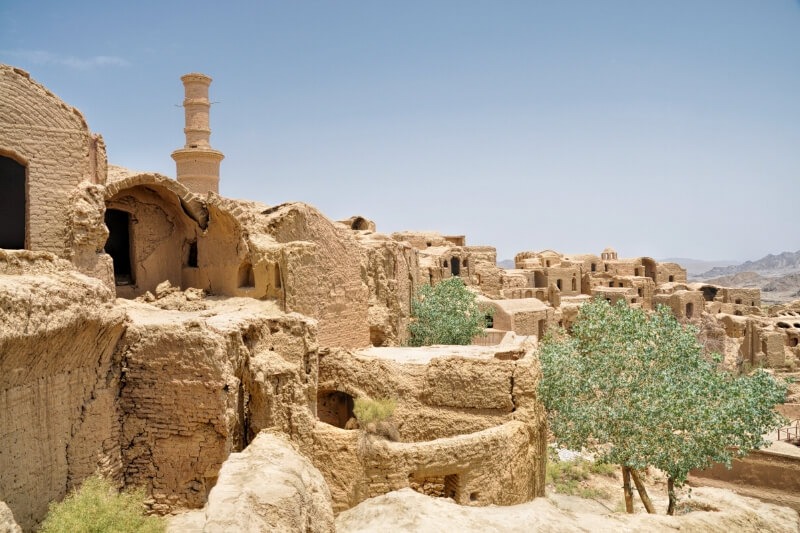
The Silk Road was an ancient network of trade routes connecting East and West. Traders, pilgrims, and explorers used these roads for thousands of years. Goods, ideas, and cultures traveled across deserts, mountains, and rivers. Many ancient sites along this route still hold stories of history and beauty. Today, travelers can explore these routes and find wonders from Turkey to China. Here are ten breathtaking sites in ten countries along the Silk Road.
1. Istanbul, Turkey: The Gateway to the East
Istanbul was the starting point of the Silk Road. Known as Constantinople during the Byzantine Empire, Istanbul connected Europe and Asia. Travelers can explore the Hagia Sophia, once a church, then a mosque, and now a museum. Its grand dome and golden mosaics are a sight to behold. Nearby, the Grand Bazaar offers a taste of the bustling trade that took place on the Silk Road. With over 4,000 shops, it is one of the largest and oldest covered markets in the world.
2. Tbilisi, Georgia: A Cultural Crossroad
Georgia’s capital, Tbilisi, was a major stop on the Silk Road. This city is a mix of different cultures and religions. The old town is full of narrow lanes, colorful houses, and historic churches. One highlight is the Narikala Fortress, which overlooks the city and the Mtkvari River. Nearby, travelers can also relax in the famous sulfur baths, which were used by travelers on the Silk Road for centuries.
3. Yerevan, Armenia: Ancient and Modern
Yerevan, Armenia’s capital, is one of the oldest continuously inhabited cities in the world. The city has a rich history and is known for its pink volcanic stone buildings. One famous landmark is the Temple of Garni, a Greco-Roman temple built in the 1st century. Not far from Yerevan is the Geghard Monastery, a UNESCO World Heritage Site. This ancient monastery is partly carved out of a mountain and holds important historical relics.
4. Bukhara, Uzbekistan: The City of Mosques and Minarets
Bukhara is a city in Uzbekistan that thrived as a center of Islamic culture and learning. Travelers on the Silk Road came here to trade, pray, and study. The city is full of beautiful mosques, madrasas, and markets. The Kalyan Minaret, standing at 150 feet, is a famous landmark. Known as the “Tower of Death” in ancient times, it was used to call people to prayer and defend the city. The Ark of Bukhara, an ancient fortress, also tells the story of Bukhara’s rich history.
5. Merv, Turkmenistan: The Lost City of the Silk Road
Merv was once one of the largest cities in the world. Located in present-day Turkmenistan, it was a major trading center on the Silk Road. Merv is now an archaeological site and a UNESCO World Heritage Site. The Sultan Sanjar Mausoleum is one of its most famous structures. This large, domed building stands as a reminder of Merv’s glorious past. Visitors can explore the ruins and imagine the bustling life of this ancient city.
6. Samarkand, Uzbekistan: A Jewel of the Silk Road
Samarkand is known as one of the most beautiful cities on the Silk Road. Located in Uzbekistan, it is home to the famous Registan Square, surrounded by grand madrasas with blue-tiled facades. Another must-see site is the Shah-i-Zinda necropolis, a collection of mausoleums with intricate tile work. Samarkand is also home to the Bibi-Khanym Mosque, once one of the largest mosques in the Islamic world.
7. Kashgar, China: The Last Stop before the East
Kashgar is one of the westernmost cities in China and has a history that dates back over 2,000 years. It was the last major city before travelers entered China. The Id Kah Mosque in Kashgar is one of the largest in China and a famous landmark. The old town of Kashgar is a maze of narrow streets, where traditional mud-brick houses still stand. On Sundays, the Kashgar Market attracts thousands, as it has for centuries, with traders selling goods from across Central Asia.
8. Herat, Afghanistan: A Center of Art and Culture
Herat in Afghanistan is famous for its art, culture, and architecture. It was a key stop on the Silk Road, connecting Persia with Central Asia. The Friday Mosque, with its beautiful blue-tiled decorations, is one of Herat’s most famous landmarks. The city is also home to the Herat Citadel, a large fortress that has seen many empires come and go. Despite challenges, Herat remains a symbol of Afghan history and resilience.
9. Tehran, Iran: A Blend of Ancient and Modern
Tehran, Iran’s capital, was an important stop for traders heading east or west. The Golestan Palace, a UNESCO World Heritage Site, is a mix of Persian and Western architecture. Its gardens, halls, and collections tell stories of Iran’s royal past. Tehran’s Grand Bazaar is another attraction, with its maze of lanes filled with merchants selling spices, carpets, and jewelry. It is a place where visitors can feel the spirit of the Silk Road.
10. Xi’an, China: The Eastern End of the Silk Road
Xi’an is where the Silk Road officially ended in the east. It was once the capital of ancient China and a center of trade. The city is famous for the Terracotta Army, thousands of life-sized clay soldiers buried with China’s first emperor. Another key site is the Giant Wild Goose Pagoda, an ancient Buddhist temple built in the 7th century. Visitors can walk along the city walls, one of the oldest and best-preserved in China, and imagine the merchants who passed through centuries ago.
The Silk Road connects cultures and histories across continents. Each site tells a unique story. From Istanbul’s mosques to Xi’an’s Terracotta Army, these places offer a glimpse into the world of ancient trade and travel. Today, the Silk Road remains a route for discovery, linking past and present.



